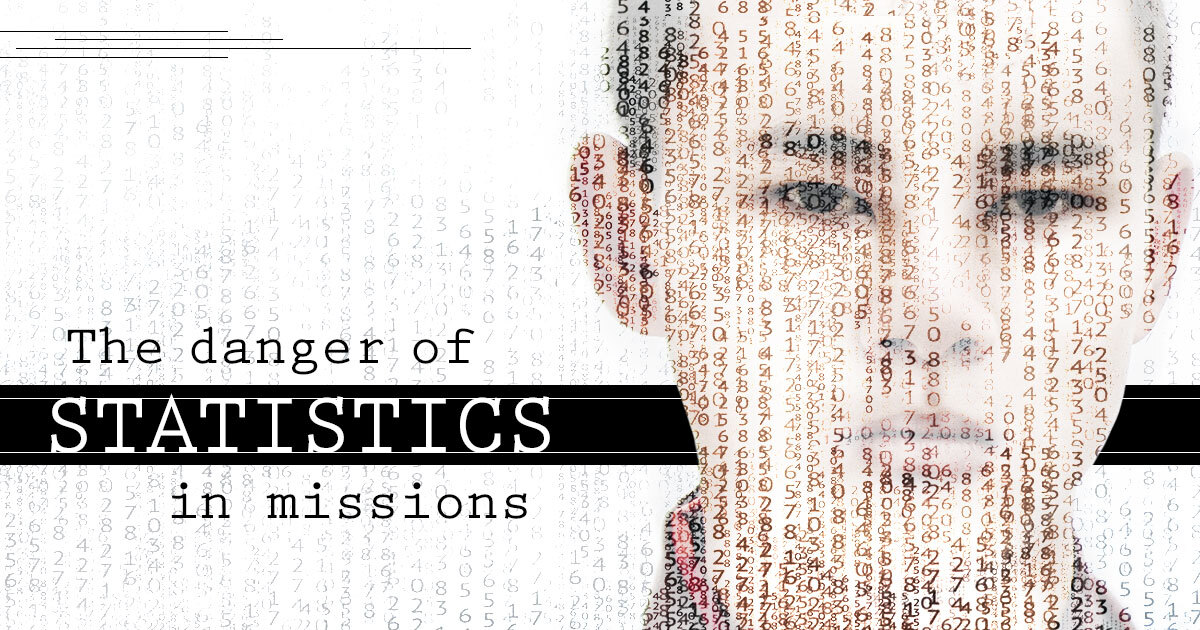
If you are anything like me, you have been intensely watching news feeds digesting the latest news about COVID-19. The White House task force has outlined changing guidelines and has predicted some somber statistics. Looking at the numbers, it is easy for my mind to become numb to the present reality.
However, at one point during a press conference, my numbness turned to responsiveness. It was when Dr. Deborah Birx shared about her grandmother’s experience during the Spanish Flu in 1918. She told a story about her grandmother, saying “…she never forgot that she was the child who was in school who innocently brought that flu home.” She continued, “My grandmother lived with that [the thought that she caused the death of her mom] for 88 years.” (1)
Her personal story made the numbers come alive and helped me become more aware of my actions. As I contemplated this combination of numbers with real life, I started realizing other spheres have faceless figures. For example, at McDonald’s, you may have probably seen a sign that says “over a billion sold” or seen advertisements claiming that eight of ten approve some product. We get the idea, but it lacks a personal connection.
Simon Sinek, author of Start With Why, said: “If we keep using numbers to represent people, at some point, the numbers lose their connection to the people and become just numbers, void of meaning.” (2) I think this is true in the area of missions. If we solely focus on a number to represent people groups, it will become unclear, overwhelming, and dry. It can be easy to forget that these are real people, with a real eternal need. Let me illustrate this.
First, statistics have the potential to be unclear. As of this writing, according to the Joshua Project, there are 7,410 unreached people groups in the world. A different sending organization says there are 7,082. Even Urbana, one of the most highly respected student conferences on missions, stated, “When the term [unreached] began to be used, the figure presented was 12,000. Now, people are talking about 10,000 or even less”. (3) These figures are helpful, and we may even be close to the true figure, but only God knows this specific detail.
Second, statistics can be overwhelming. Recently, my wife and I had a small group in our home for lunch. We were discussing missions and unreached people groups. In the middle of the conversation, I took a book off my shelf that included all the people groups in one country in Asia and passed it to one of our guests. He flipped through it and was mesmerized by how thick it was. He said, “I had no idea there were so many people groups in one country!” That response is something that we frequently hear. For many, there is no connection between their lives and those that have yet to hear the Gospel.
Third, statistics can be dry. Hudson Taylor understood this fact as he prepared to speak at a spiritual edification conference in Perth, Scotland. He anguished over the “4 hundred million souls” and wanted the attendees to understand God’s heart for these people. Instead of leading his message with a sum that would have gone over their heads, he instead recounted the story of his Chinese friend Peter “…of this man’s friendliness and of his own efforts to win him to Christ” (4). Hudson Taylor’s account helped the audience to understand the need as a real and present fact.
I was struck again by this need to personalize numbers as I read the prayer requests from one GSI worker in SE Asia. He wrote this,
“Though 20 years older than I am, Lance is probably my closest friend in the village*. He is also one of my employees. The older generation has criticized Lance for becoming my friend. They are leery of our presence in the village. Please ask that he would be willing to sell everything someday to get the pearl of greatest price. Ask that as his body ages, his mortality would cause him to be more concerned about his eternity.
Solomon is a lumberjack who seems to spend as much of his time fixing chainsaws as lumbering trees. He is just a few years younger than we are. He is a hard worker and a good neighbor, always ready to lend a hand. I would love for him to become my brother in Christ, not just my neighbor.
Eve was married off at 12 or 13 years old to a very unfaithful husband. While still married, he would sometimes bring his flings home to introduce them to Eve. Eventually, after having five kids together, he left her. She makes a meager income working in the rice fields and in her garden and making charcoal. Whenever someone in the family is sick, she is always afraid that she has done something to upset the spirits.” (5)
When you hear statistics in a mission presentation, a sermon, or a website, take a moment to pause and remember that these numbers symbolize real people like Solomon, Eve, and Lance. They have an ultimate problem [sin] that only the communication of the Gospel can truly solve. God wants their names written in His book (Revelation 20:15), and he wants to welcome them as sons and daughters into His kingdom for eternity.
- Ewing, Philip. “NPR Choice Page”. Org, 2020, https://www.npr.org/sections/coronavirus-live-updates/2020/03/25/821706744/social-distancing-is-personal-for-wh-virus-honcho-dr-deborah-birx.
- “Using Numbers To Represent People: By Simon Sinek”. Com, 2020, https://www.linkedin.com/pulse/using-numbers-represent-people-simon-sinek-bugra-berberoglu. Accessed 3 Apr 2020.
- “How Many ‘Unreached’ People Groups Are There In The World?”. URBANA STUDENT MISSIONS CONFERENCE, 2020, https://urbana.org/blog/how-many-unreached-people-groups-are-there-world.
- Taylor, Howard. Hudson Taylor and the China Inland Mission: Growth of a Work of God. OMF International, 2000.
- GSI Fieldworker. Personal Newsletter, March 2020.
